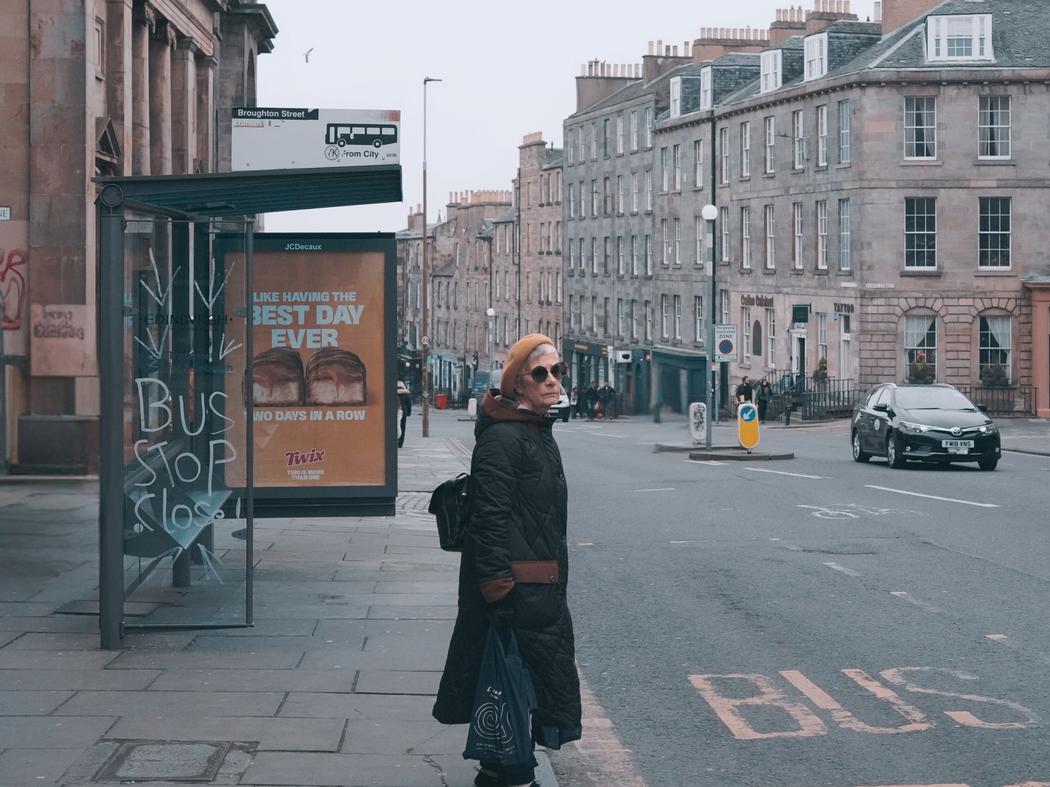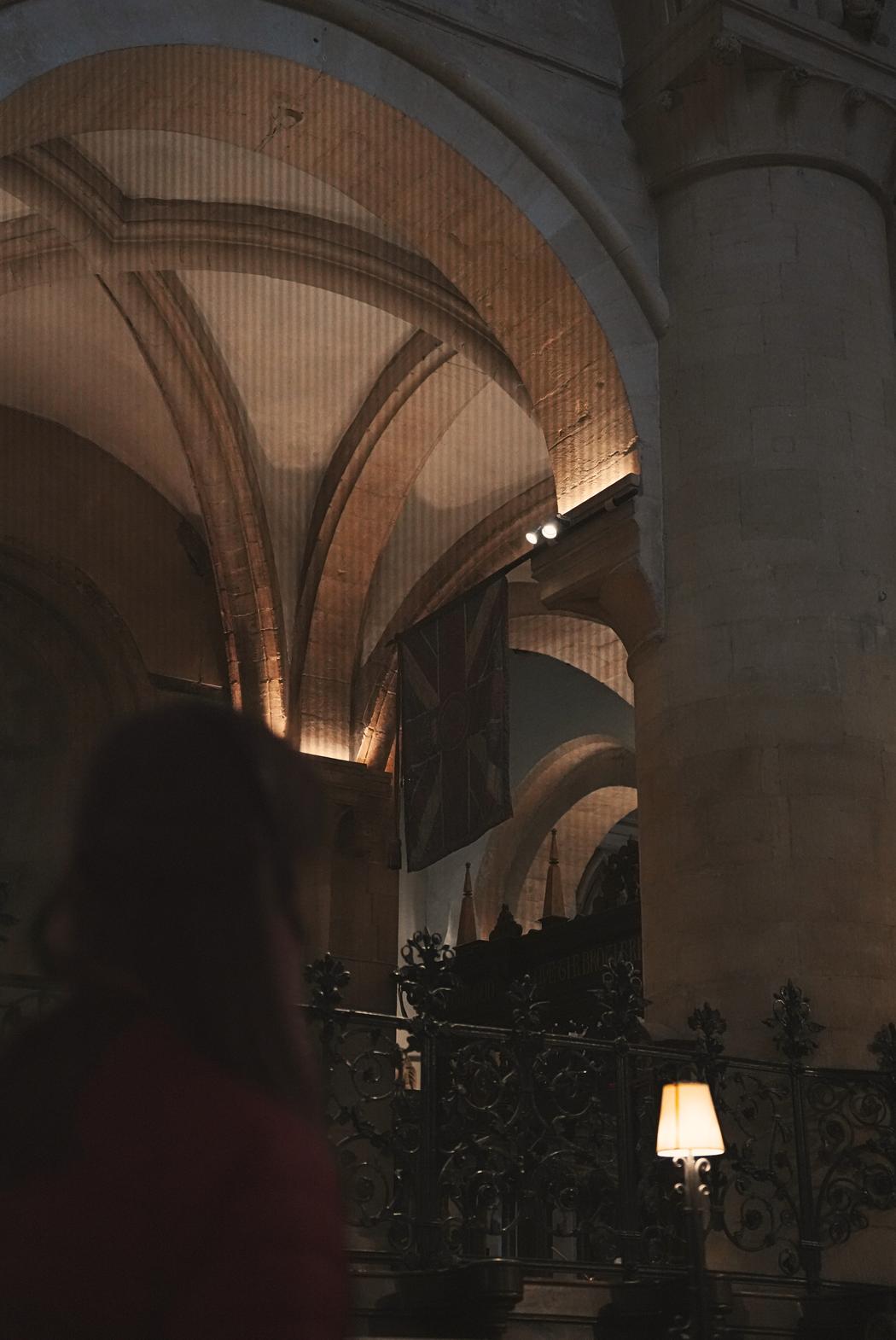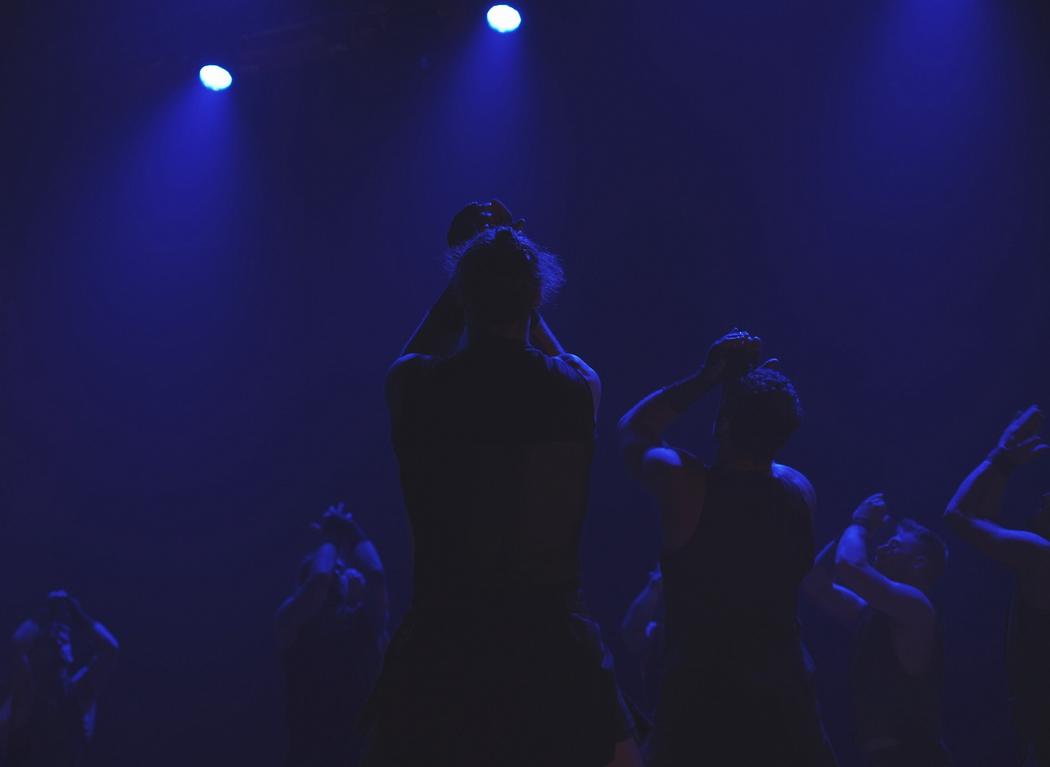Kelly Lu
 Kelly Lu | Stop
Kelly Lu | Stop
What inspired the title “The Quiet Gaze”? What does “quiet” mean in your artistic vocabulary?
For me, “quiet” is not about silence in the literal sense, but about a kind of attentive stillness — a space where observation happens without urgency, where the viewer lingers and absorbs what might otherwise be overlooked. The “gaze” is active, from both my perspective and the audience’s, yet it moves gently, without imposing. The title reflects the way I like to approach both life and art: patiently, and with an openness to subtlety.
In the photo “Under Arches”, the lone figure seems to blend into the architecture. Was this intentional? What message were you aiming to convey?
Yes, it was intentional. I wanted the view of the figure’s back to feel fully integrated into the frame, creating a layered experience where the audience is observing while the figure also observes. The photo was taken in Oxford University’s cathedral. The idea is about the quiet dialogue between humans and the environments they are in, and how we leave traces of ourselves in the places we pass through — even when we feel invisible. And when I say “under arches,” it’s not only about a single kind of arch; it’s also a metaphor for the different thresholds, passages, and frames we move through in life.
Your work often captures fleeting, unnoticed moments. How do you choose which moments are worth capturing?
I follow a kind of instinct that’s hard to put into words. It’s less about seeking “big” moments and more about sensing a shift — something in the air, a movement, a shadow, a pause in someone’s step. I try to stay open to moments that could vanish if I looked away for even a second, because those brief, fragile instants often construct the uniqueness of our lives.
 Kelly Lu | Under Arches
Kelly Lu | Under Arches
Light and shadow seem to play a key role in your compositions. How do you use them to express emotion or narrative?
I enjoy the idea that nothing is only about black and white. The contrast brings a sense of emphasis, but that doesn’t mean what isn’t in the light is any less important. Often, I’m searching for a moment where light and shadow collapse into each other — where the boundary blurs. That inbetween space feels emotionally rich, because it mirrors the way most truths live in shades, not absolutes.
How does your background in screenwriting and film influence the way you frame your photographs?
Screenwriting taught me to hint at the before and after of a story. Film trained my eye to frame the world with intention, even when I’m working with a single still image. When I photograph, I’m always looking to tell the story behind the image, and to discover what kinds of narratives and emotions can be held — and received — by a single frame.
Do you approach photography more like a writer or like a director? Or something entirely different?
I approach photography more from a writer’s perspective, but with a director’s habits. As I’ve shared in other answers, I tend to tell stories through my lens that invite empathy. The visual elements I choose are an unspoken way of leaving blanks — hints that guide viewers while allowing them to fill in their own understanding. It’s like offering the key words in a narrative and letting the audience write the rest. In that sense, the act of selecting those elements is the writer in me, while shaping them into intentional visual cues is the director’s touch.
 Kelly Lu | Moment
Kelly Lu | Moment
You describe yourself as working across disciplines. How do photography, writing, and film feed into each other in your practice?
They’re different languages, but they speak to the same obsession: storytelling. Writing helps me clarify what I’m feeling; film helps me choreograph space and time; photography freezes a moment in its purest form. Moving between them keeps me from getting too comfortable in any one medium and reminds me that every story can be told in more than one way.

Leave a Reply
You must be logged in to post a comment.